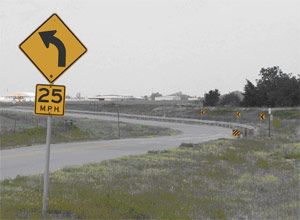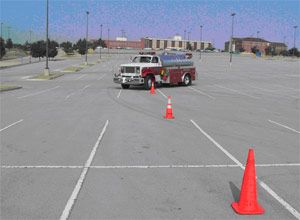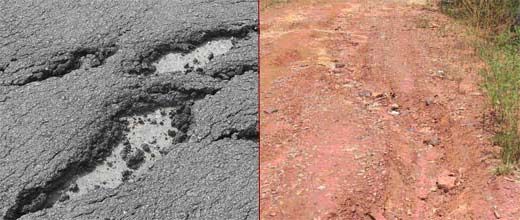Updated March 17, 2016
By Michael A. Wieder
Those who review fire service news or annual firefighter fatality statistics are familiar with the fact that approximately 25 percent of all LODDs every year are as a result of vehicle collisions.
The largest portion of these deaths — on average about 40 percent — occur in privately owned vehicles. What surprises many people is that when looking at deaths that occur specifically in fire apparatus, the highest percentage occur in water tankers or tenders.
The U.S. Fire Administration studied a 12-year period and found that approximately 22 percent of fire apparatus collision fatalities occurred in tankers/tenders. There were more fatalities in tanker/tenders than in pumpers and aerial apparatus combined. This is despite the fact that USFA estimates that tankers/tenders account for only 3 percent of all fire apparatus in the United States.
Because of these alarming numbers, USFA commissioned a study to examine this issue and make recommendations on how to reduce the number of tanker/tender-related collisions. The final result was a report titled “Safe Operations of Fire Tankers,” which can be downloaded here.
The information contained in it is still relevant today. The USFA’s 2008 Firefighter Fatalities Report released last month cited two deaths that involved a fire department tanker/tender.
The Safe Operations of Fire Tankers report provides extensive, detailed information on the causes and prevention of fire department tanker/tender crashes. All of this information is summed up in 20 tips for safer tanker operations.
1. Operate the tanker at a safe and reasonable speed
Never drive the tanker faster than a speed at which it can be fully controlled. Never exceed the posted speed limit when driving under nonemergency response conditions.
2. Take corners slower than posted speed limits
The cautionary speed signs that accompany road signs indicating curves in the road should be considered the maximum speed for a tanker driving on these curves in any condition. In many cases, the suggested speed may be too high for tankers as they are developed for passenger cars on dry roads. It most cases, it will be necessary for the tanker to take the curve at a speed slower than what is posted.
 |
3. Spec anti-lock braking
It is recommended that new tankers exceeding a GVWR of 32,000 pounds be equipped with antilock braking systems. NFPA 1901 requires antilock brakes for all vehicles exceeding 36,000 pounds.
4. Keep all wheels on the primary road surface at all times
Having the tanker’s right-side wheels drift off the edge of the road is one of the most common causes of tanker crashes. If the right-side wheels do get off the edge of the road, do not try to bring the apparatus back onto the road surface at a high speed. Slow the apparatus to 20 mph or less before trying to bring the wheels back onto the road surface.
5. Travel with the water tank either completely empty or completely full
This minimizes the effects of liquid surge within the tank. This is a good idea even if the tank is properly baffled, and it is crucial if the tank is not properly baffled.
6. Avoid operating retrofit tankers
Every attempt should be made to place in service tankers that were specifically engineered and designed for fire department operations. Serious accidents have been attributed to poorly designed, retrofitted or homebuilt tankers.
7. Know the weight of your apparatus
All tankers should be weighed completely full and that weight should be posted (in pounds and tons) on a plaque on the vehicle’s dashboard. This will help the driver to determine if it is safe to drive the vehicle on a road or bridge that has posted weight restrictions.
8. Require mandatory driver training
This must include extensive training before being allowed to drive the tanker on public roadways and refresher training (see below) on a regular basis according the requirements of NFPA 1451 and NFPA 1500.
 |
9. Establish an effective maintenance program
Many mechanical failures that lead to crashes can be prevented if the apparatus is inspected and maintained on a regular basis. Guidelines for establishing proper maintenance programs can be found in NFPA 1915. It is recommended that apparatus be inspected at least weekly.
10. Use spotters when backing the apparatus
Although cameras and other devices for assisting with backing the apparatus do provide some measure of safety, there is no substitute for having at least one, preferably two, spotters to guide the driver while the apparatus is being operated in reverse. NFPA 1500 requires spotters for backing, regardless of whether the apparatus is equipped with cameras or other backing safety equipment. One spotter should be equipped with a portable radio in the event that they need to contact the driver during the backing operation.
11. Retrofit all tankers with back-up alarms
These devices warn other people in the area that a tanker is backing up. This will allow them to get out of the way before a crash occurs.
12. Make a complete stop at all intersections with a stop sign or red traffic light
The most likely place to collide with another vehicle is in an intersection. Nearly all of these crashes can be prevented if the tanker comes to a complete stop when faced with the signal to do so.
The tanker may proceed through the intersection after assuring that all other vehicles have granted them the right of way to proceed. If the tanker driver cannot be certain that all vehicles are stopping to allow the tanker passage, the apparatus should not proceed.
13. Wear a seat belt whenever the apparatus is in motion
While wearing a seat belt may not prevent a crash from occurring, it certainly can minimize the risk to the driver and the other occupants in the event one does occur. A significant percentage of tanker accidents involve the vehicle rolling over and the driver and/or passenger(s) being thrown from the vehicle.
The chance of serious injury or death is greatly multiplied when the occupant is thrown from the vehicle. Wearing of seatbelts will prevent near all ejections from the vehicle.
14. Keep the windows rolled up
This will add an extra measure of security in preventing the occupants from being ejected from the apparatus in the event of a rollover crash.
15. Know your response district
By being familiar with the various routes within the response district, the driver will be able to anticipate when approaching hazardous sections of roads, dangerous curves and other hazards to safe vehicle response.
16. Avoid poorly constructed or unpaved roads
Again, familiarity with the response district will aid the driver in this objective. It may be safer and faster to take a paved route that is longer than the shorter unpaved route to an emergency scene.
 |
17. Limit the number of apparatus responding
Dispatching three engines, two tankers, a heavy rescue squad, and three chief officers to a reported car fire is overkill. The more vehicles that are on the road, the greater the odds of one of them being involved in a crash.
18. Do not respond at an emergency rate when no emergency is known to exist
Apparatus have been involved in collisions while responding with lights and sirens to perform a cover up at a neighboring station. This is not an emergency. As well, fourth- or fifth-due apparatus have been involved in crashes well after the initial apparatus arrived on the scene and found no fire or emergency condition.
As soon as it is determined that no emergency exists, or that the initial arriving apparatus can handle the emergency, all other responding apparatus should be directed to reduce their response to a nonemergency rate.
19. Have at least one firefighter accompany the driver
The passenger can assist by operating warning devices, handling radio transmissions, and being a second set of eyes. The passenger should not hesitate to warn the driver when they feel that the tanker is being operated at an unsafe speed.
20. Practice driving in adverse road conditions
It is not reasonable to expect that a driver who has only been trained in daylight hours, on clear dry roads will be qualified to operate the vehicle safely at night on in adverse weather.
Following the 20 points listed above will certainly lead to a reduction of the hazards associated with operating fire department tankers. The need to develop an effective driver training program and to enforce fire department standard operating procedures and policies cannot be overstated. These actions will have a profoundly positive effect on the safe operation of tankers, and for that matter all emergency vehicles.
The information contained in this article is only a small portion of the overall information contained in the USFA Safe Operation of Fire Tankers report. Fire departments that operate tankers are strongly encouraged to download a free copy of this report. This will be the first step towards improving the safety of the operation of tankers in your department.
Mike Wieder serves as Assistant Director of Fire Protection Publications at Oklahoma State University and Executive Director of the International Fire Service Training Association. He holds undergraduate and graduate degrees in fire protection, occupational safety, and adult education. He is the author of more than 30 textbooks and major government reports, including the USFA’s Safe Operation of Fire Tankers.











